Postwar Italian sculpture vaunts a host of prestigious artists who have maintained Italy’s age-old primacy in the plastic arts, from ancient Rome through the medieval works of Arnolfo and the Pisanos into the modern era with artists of the caliber of Donatello, Jacopo della Quercia, Michelangelo, Bernini and Canova.
Thanks to the innovative work of Medardo Rosso, this tradition was not interrupted even Italian art’s worst century, the nineteenth, and it reflowered in the early twentieth with such artists as Umberto Boccioni and his Plastic dynamisms or the polymaterial experimentation of Arturo Martini and Marino Marini.
In the second half of the century, avant-garde sculpture turned to abstraction, and the accomplishments of such new artists as Umberto Mastroianni (heir to Boccioni’s dynamism) even as early as the 1940s, and immediately afterwards Pietro Consagra and Lorenzo Viani threw the Italian school into sharp relief. They were soon joined by other non-figurative sculptors such as Francesco Somaini and above all Giò and Arnaldo Pomodoro, who made their own contribution to the international abstract school that dominated from the 1950s on. A later artistic generation included an artist of extraordinary plastic power like Giuliano Vangi, who after an early period of abstract work returned to potent figurative sculpture. A separate strand was the “Arte Povera” school of the 1960s with its search for new materials on the borderline between sculpture, painting and installations, which in any case did leave its mark upon sculpture, in such an artist as Eliseo Mattiacci, for instance.
Scultura italiana del secondo dopoguerra
Italian Sculptors since the Second World War

Works of art

Verde alga
Despite its large scale, the sculpture is compact, peremptory, authoritative with the sacral nature of a totem pole or an ancient stela. It is bi-frontal, the chromatic element of the material perfectly wedded to the play of forms in elongated strips.
Sculpture
20th century AD
Abstract
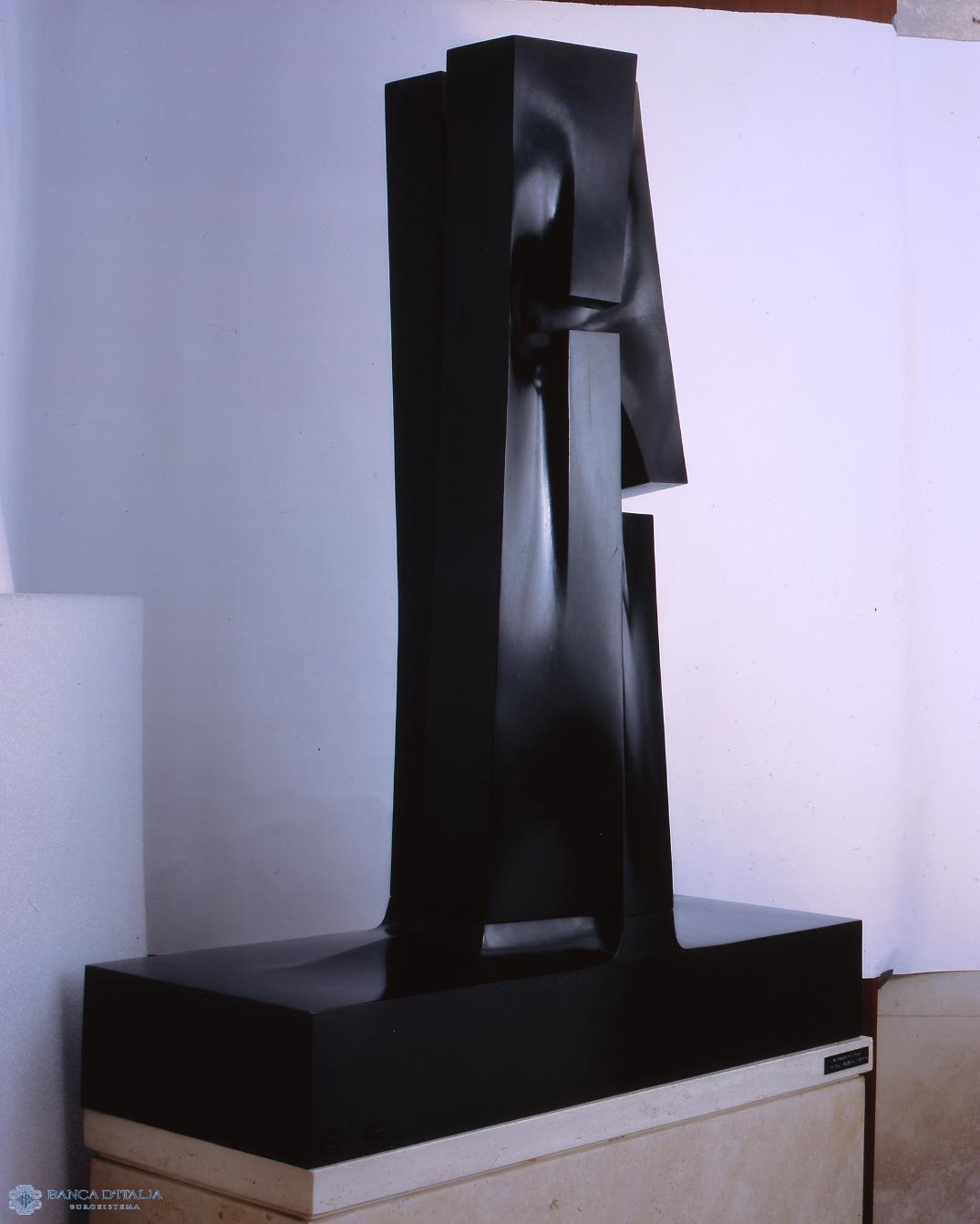
T Verticale - Orizzontale
This is a version in bronze of another, in “Black Forest serpentine” stone, with the same title and done in the same year, for the Unidad Popular government of Chile. Though in a different material, this sculpture conserves the severe, compact structure of its marble companion.
Sculpture
20th century AD
Abstract
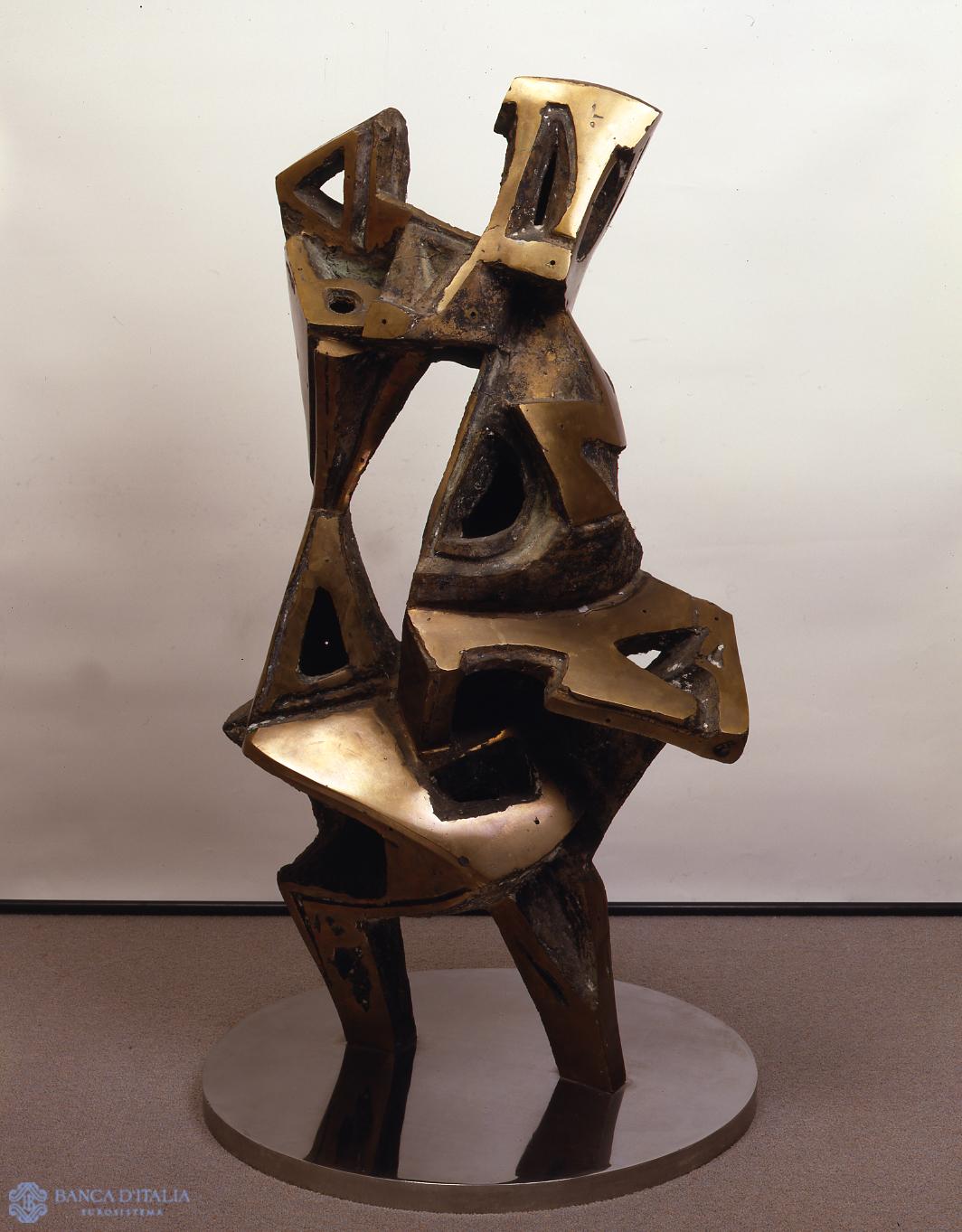
Untitled
The structure consists in vertical and horizontal elements, in another of the artist’s formal leaps, using the sharp contrast between light and shadow to accentuate the de-composition of the volume. Golden blades stick far out of the vertically-developed structure, cutting it at the centre.
Sculpture
20th century AD
Abstract
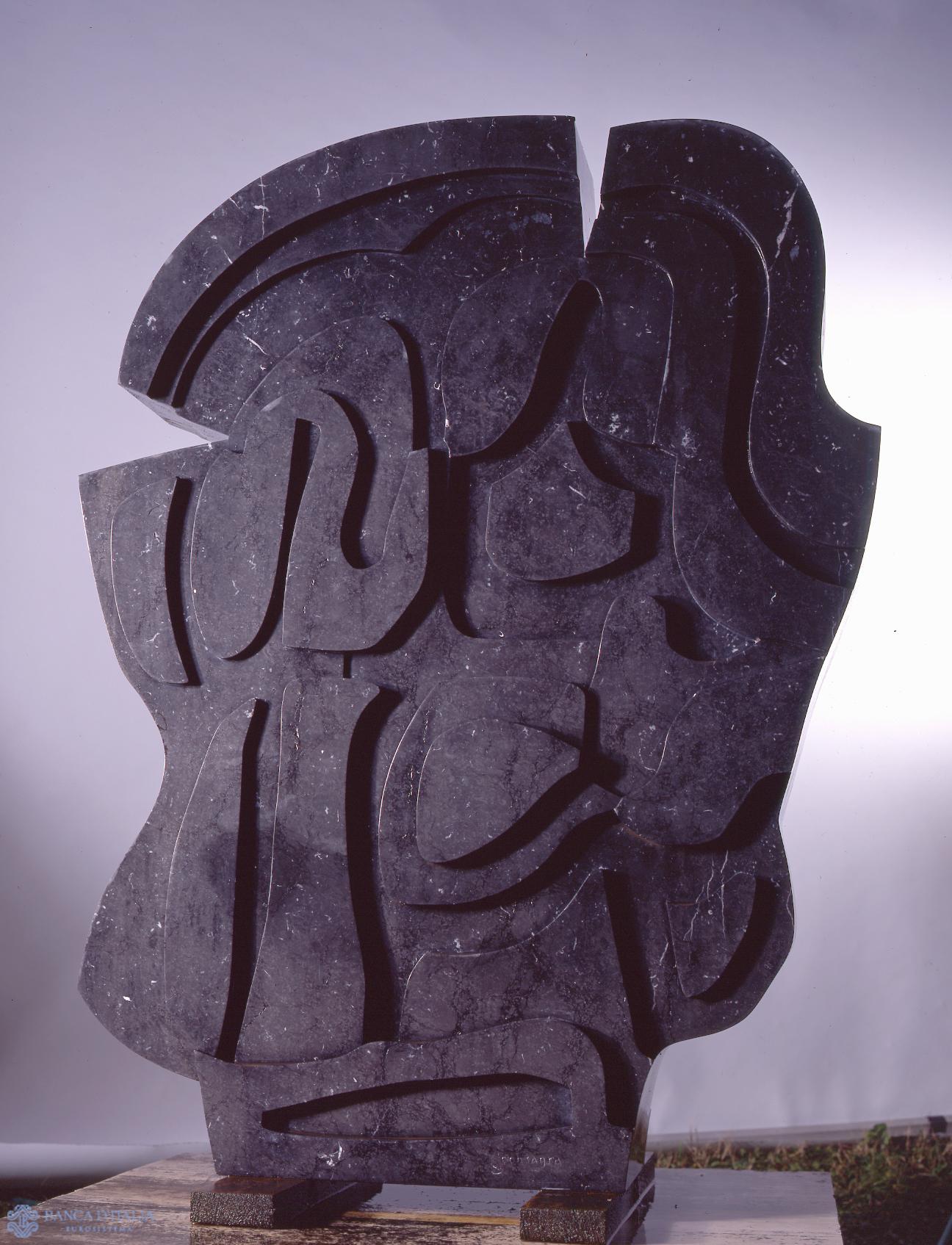
Nero di Atlantide
This large sculpture is in a particularly precious marble. The forms are amoeba-like but extended in their fields, chasing slowly after one another. The design is as if simplified, terse. The black of the stone absorbs every part of the incision, making the sculpture flatter.
Sculpture
20th century AD
Abstract

Movimento in piena aria e nel profondo
This gigantic, complex work is crammed with hostile-looking, bellicose fragments; it is a menacing world adrift in a galaxy of the most unbridled imagination. The wall we see is monumental, Pomodoro’s preferred scale.
Sculpture
20th century AD
Abstract
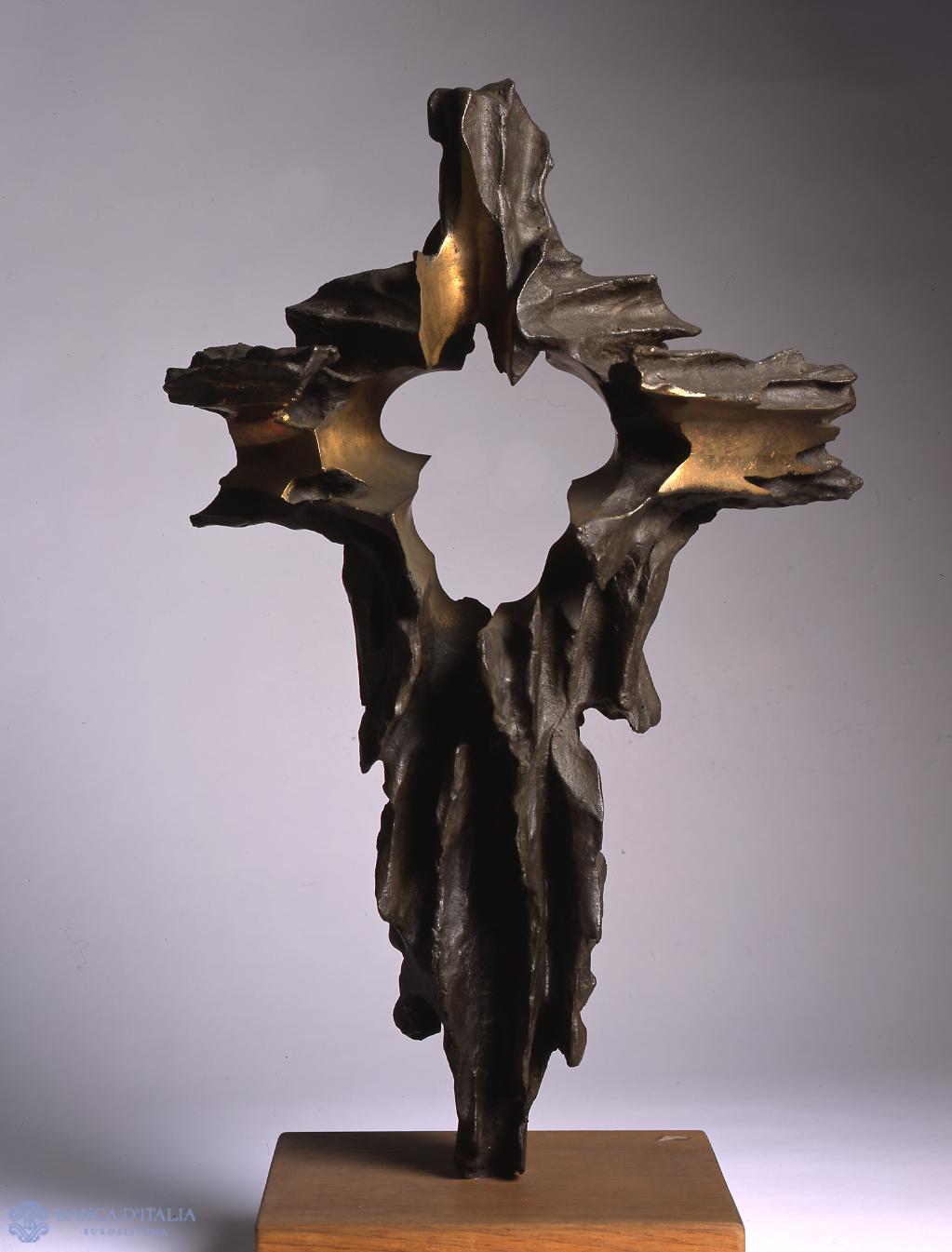
Grande martirio
The cross structure develops from a central hole, in shadow, in countless horizontal and vertical splinters. We seem to be watching the explosion of an inner nucleus of material, shooting out into space. The reference to the cross, the symbol of the sacrifice and martyrdom of Christ, is explicit.
Sculpture
20th century AD
Abstract
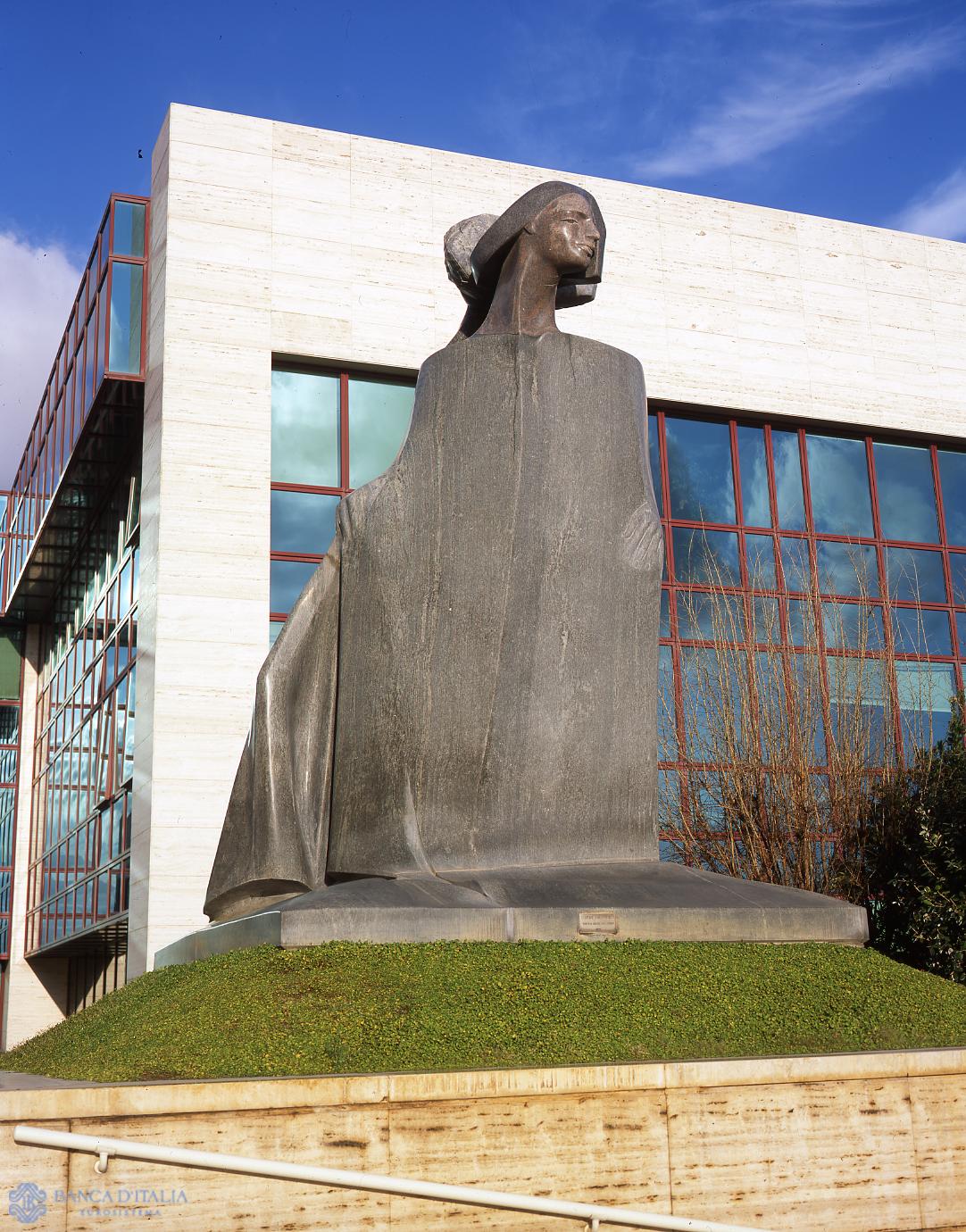
Donna con albero azzurro
On a base of the same material, this polychrome marble figure (green Guatemala marble, the face in multicoloured juparanà, part of the tree behind the head in dark green serpentine) dominates the broad courtyard at the heart of the Bank of Italy’s Donato Menichella Centre in Vermicino near Rome.
Sculpture
20th century AD
Figurative
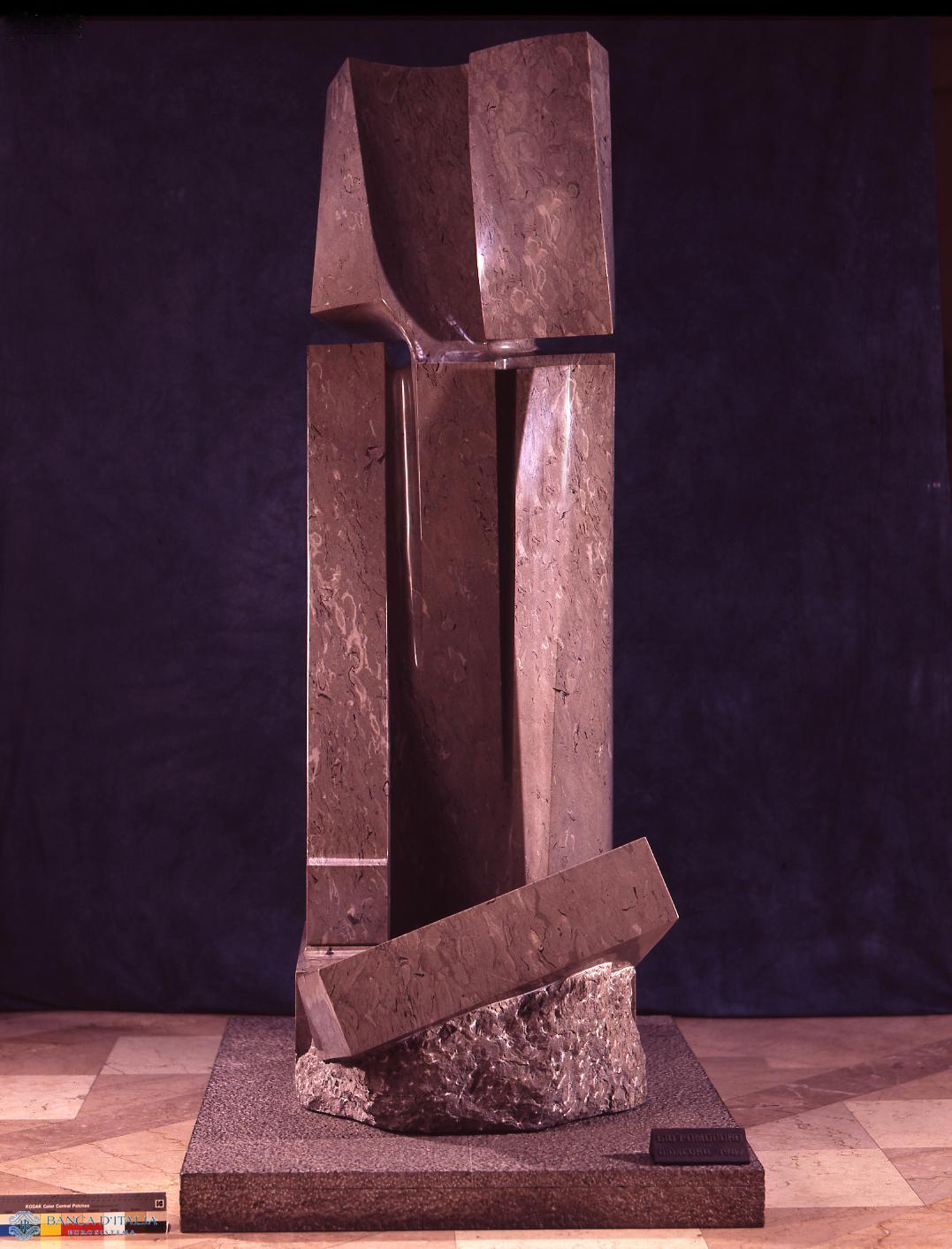
Dioscuro A
Lacking the artist’s own direct interpretation, it is always arduous to decipher the messages that the sculptor entrusts to his titles and to the compact but articulated presences of his works. Giò Pomodoro is a politically engaged artist, a refined, cultured intellectual. His sculptures always refer to facts, experiences, figures that have affected his life and his meditations on form.
Sculpture
20th century AD
Abstract
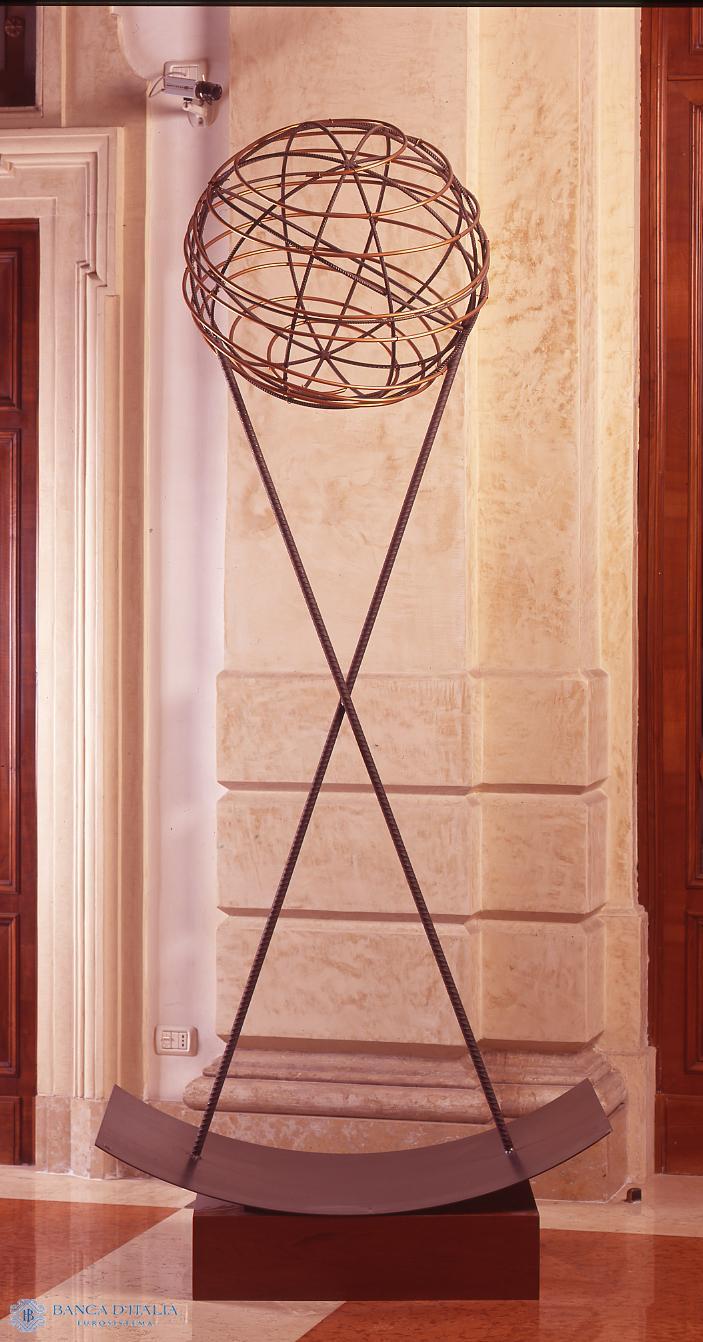
Per Cornelia II
An armillary sphere made out of a tangle of copper wire is suspended in the void from two wire-shaped iron rods welded to a black-enameled sheet of metal in the shape of a crescent moon. This is a “light”, gentle sculpture, part of the series of “space-cosmic-astronomical” works (as Bruno Corà called them) that marked Mattiacci’s output from the 1980s on.
Sculpture
20th century AD
Abstract
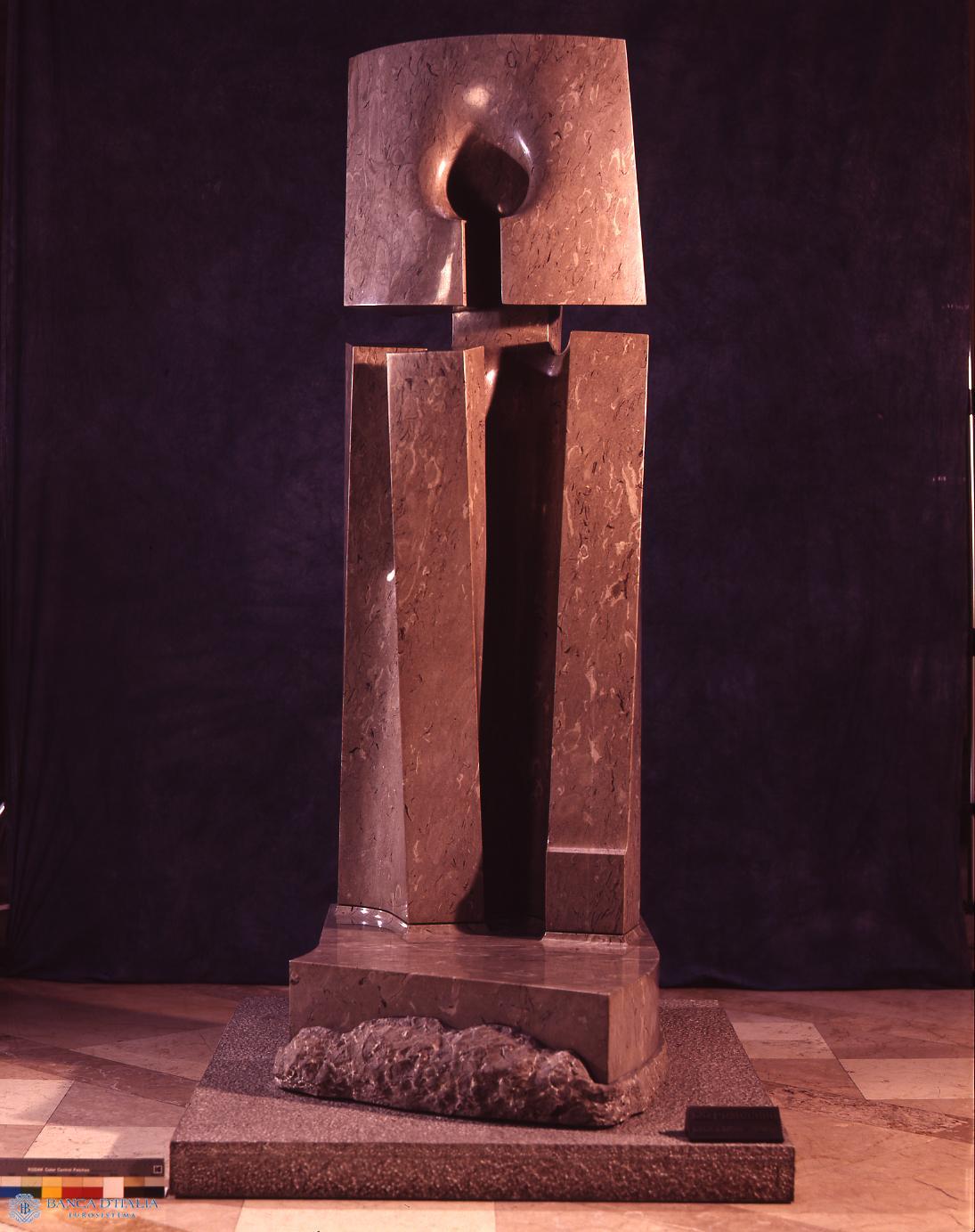
Dioscuro B
Lacking the artist’s own direct interpretation, it is always arduous to decipher the messages that the sculptor entrusts to his titles and to the compact but articulated presences of his works. Giò Pomodoro is a politically engaged artist, a refined, cultured intellectual.
Sculpture
20th century AD
Abstract

Bifrontale blu baia
This lovely stone, with its blue and grey tones, lends itself perfectly to the interplay of crossed, transversal fans. The structure consists of two elements bound together by a belt that repeats the motif of the grooves which, identical, chase around above and alongside one another.
Sculpture
20th century AD
Abstract
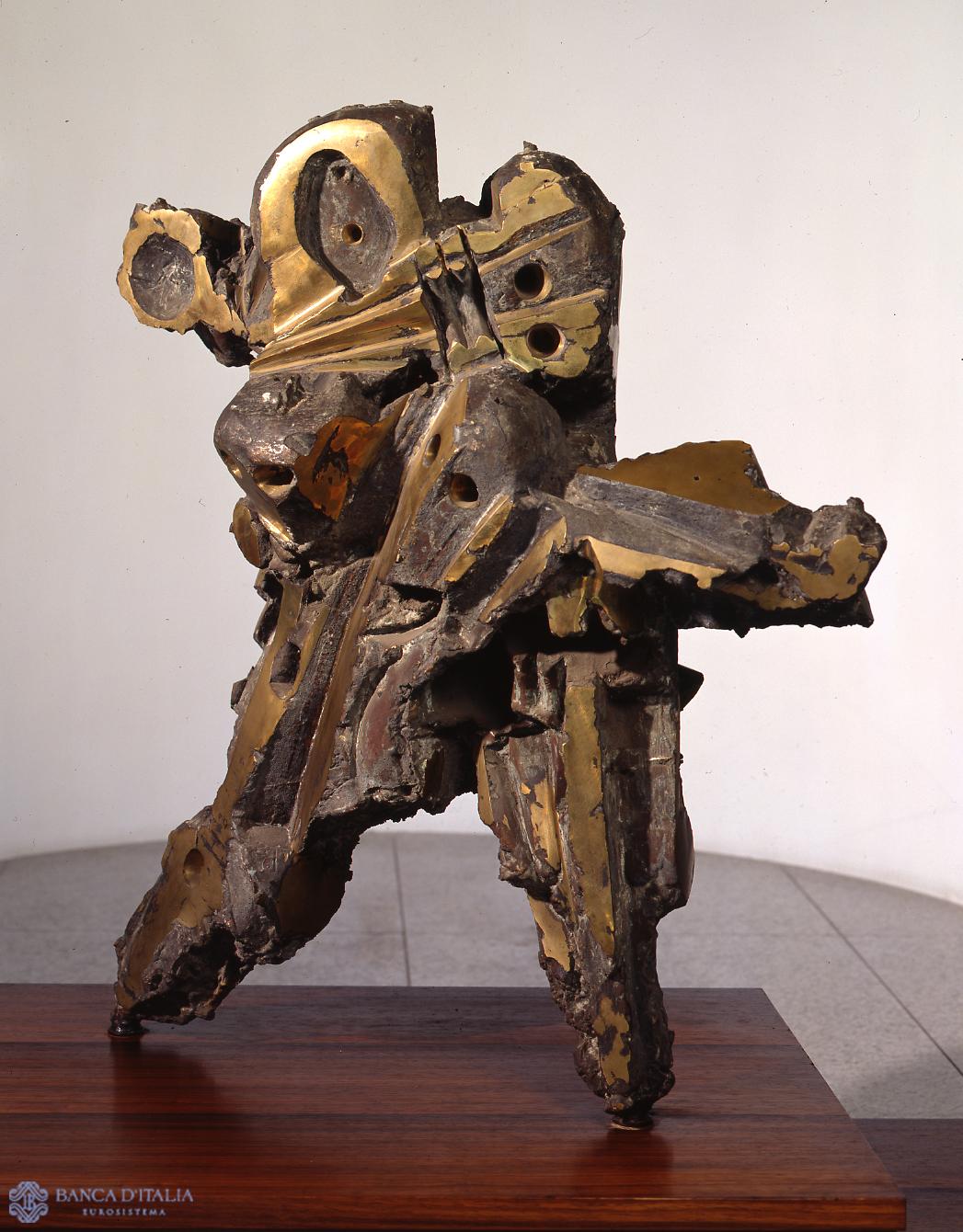
Barabba
“As early as the Fifties”, writes Maurizio Calvesi, “Mastroianni alternates shiny, abstract forms, geometrically defined as light-reflecting planes, with materially Informal areas, rough, shadow-drenched, in a grand evocation of generative, formative processes, of quasi-volcanic impetuosity”.
Sculpture
20th century AD
Abstract
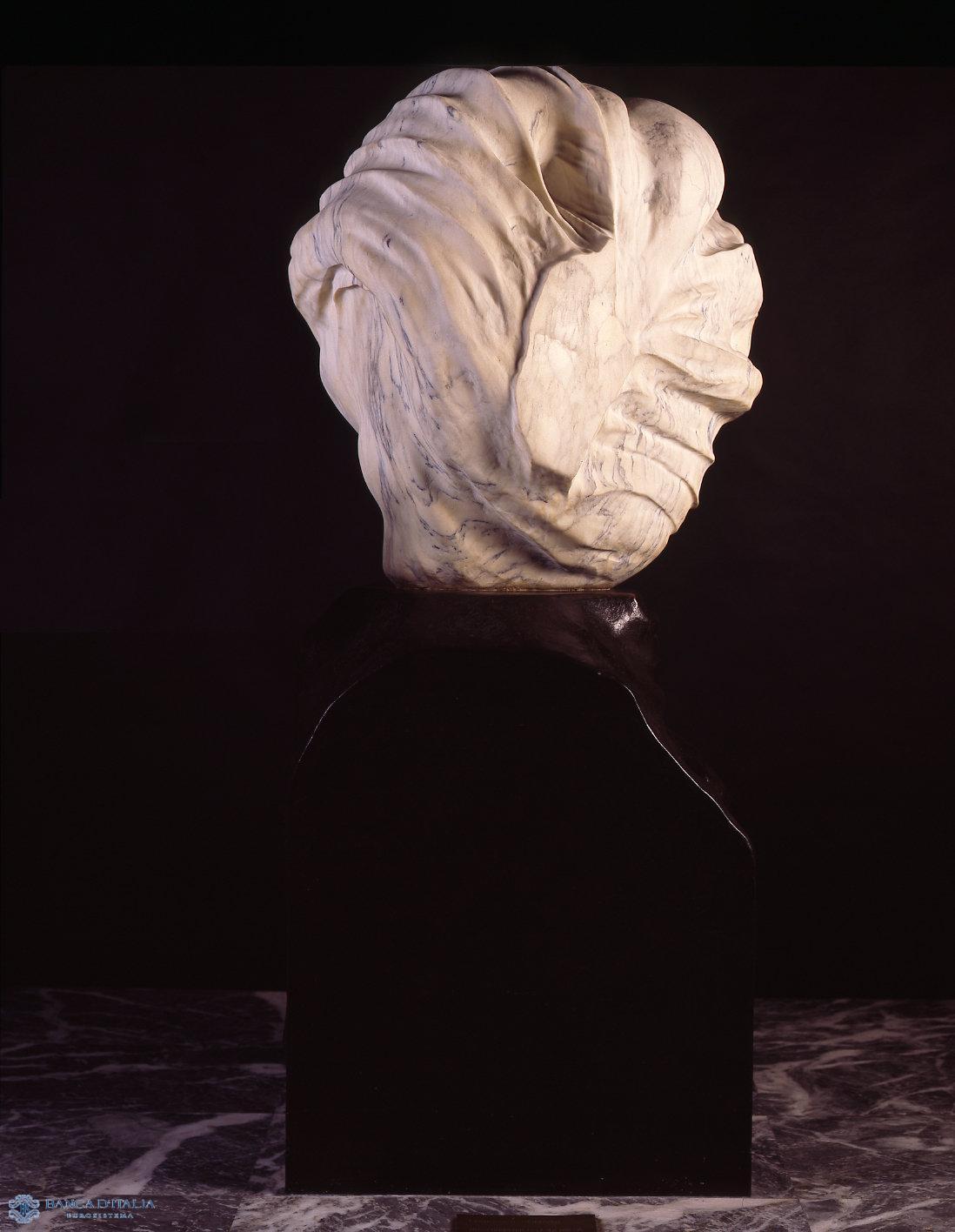
Antropoammonite 1^ e la sua traccia
The sculptures of the Antropoammoniti cycle of 1975, executed in pink Portugal marble, are a significant formal invention, new in Somaini’s career. They represent the metamorphosis into a plastic organism of a female pelvis and its bone structure.
Sculpture
20th century AD
Abstract
